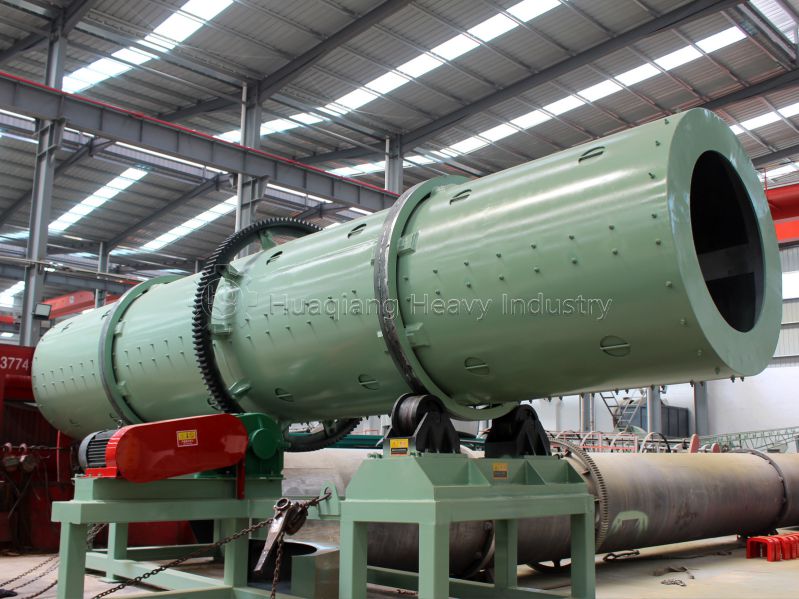Technical Overview
A rotary drum granulator is a device that forms particles under suitable humidity conditions by rolling and colliding materials inside a rotating drum, utilizing the viscosity of the materials themselves and external binders. In modern fertilizer production, whether serving as an NPK fertilizer granulator or an organic fertilizer granulator, this granulation method plays a crucial role. Compared with the double roller press granulator, drum granulation is more suitable for processing formulations requiring liquid components.
Equipment Structure and Working Principle
The rotary drum granulator mainly consists of the following parts:
- Rotating drum body:Made of rolled steel plates, with lifting plates or spiral blades on the inner wall to increase material rolling and collision, promoting particle formation
- Transmission device:Including motor, reducer, and transmission sprocket, providing power for the rotating drum body
- Supporting device:Supports the weight and rotation of the drum body, usually using rolling bearings or sliding bearings
- Spray system:Used to spray proper amount of water or binder during granulation to control the humidity and viscosity of materials
- Feeding and discharging devices:Including feeding and discharging ports, used for the entry and exit of materials
- Control system:Used to monitor and adjust the operating parameters of equipment, such as speed, humidity, temperature, etc., to ensure the stability and particle quality of the granulation process

Application Scope and Technical Advantages
Fertilizer Production Applications
In a complete NPK production line, the drum granulation process can efficiently handle various formulations. Whether serving as a professional NPK fertilizer granulator for compound fertilizer production or as an organic fertilizer granulator for processing organic materials, it ensures product quality stability.
Chemical Product Production
For producing chemical raw materials such as catalysts, adsorbents, and desiccants, the rotary drum granulator ensures particle uniformity and strength.
Granulation Technology Comparison
| Technology Type | Rotary Drum Granulator | Double Roller Press Granulator | Suitable Scenarios |
| Working Principle | Rolling agglomeration granulation | Mechanical pressure forming | Selected based on material characteristics |
| Particle Shape | Spherical or near-spherical | Flake or hemispherical | Selected based on product requirements |
| Humidity Requirements | Requires liquid addition | Dry production | Selected based on process |
| Investment Cost | Medium | Lower | Selected based on budget |
Production Process Flow
In modern NPK production lines, the drum granulation process typically includes the following steps:
- Raw material pretreatment and precise batching
- Uniform material mixing
- Drum granulationin the rotary drum granulator
- Particle drying and cooling
- Screening and coating treatment
- Finished product packaging
For specific production needs, rotary drum granulators and fertilizer roller press machines are sometimes used in combination to achieve optimal production efficiency and product quality.
Technology Development Prospects
With the growing global demand for efficient agriculture and sustainable development, rotary drum granulator technology continues to innovate. Whether applied as an NPK fertilizer granulator in compound fertilizer production or serving as an organic fertilizer granulator in organic waste resource utilization, it is developing towards higher efficiency, energy savings, and intelligence. Compared with the double roller press granulator, drum granulation technology has obvious advantages when processing formulations containing liquid components, while the double roller press granulator holds an important position in the field of dry granulation.
In the future, with advancements in intelligent control technology, rotary drum granulators will be better integrated into modern NPK production lines, achieving more precise process control and higher energy utilization efficiency, making greater contributions to the development of the global fertilizer industry.